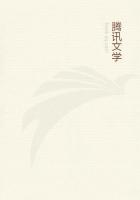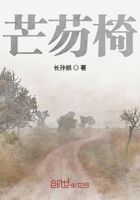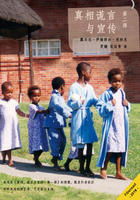Another Viburnum, with smooth, bluish-black, sweet, and edible fruit, that ripens a month earlier than the nanny-berry's, is the similar BLACK HAW, STAG-BUSH or SLOE (V.prunifolium).As its Latin name indicates, the leaves suggest those of a plum tree.It is a very early bloomer; the flat-topped white clusters appearing in April, and lasting through June, in various parts of its range from the Gulf States to southern New England and Michigan.Unlike the hobble-bush and the withe-rod, both the nanny-berry and the black haw have conspicuous winter buds, the latter bush often clothing its tender undeveloped foliage with warm-looking reddish down, although few of its naked kin have so southerly a range.
ONE-SEEDED, BUR- or STAR CUCUMBER; NIMBLE KATE(Sicyos angulatus) Gourd family Flowers - Small, greenish-white, 5-parted, of 2 kinds: staminate ones in a loose raceme on a very long peduncle; fertile ones clustered in a little head on a short peduncle.Stem: A climbing vine with branched tendrils; more or less sticky-hairy.Leaves:
Broad, 5-angled or 5-lobed, heart-shaped at base, rough, sometimes enormous, on stout petioles.Fruit: From 3 to 10bur-like, yellowish, prickly seed-vessels in a star-shaped cluster, each containing one seed.
Preferred Habitat - Moist, shady waste ground; banks of streams.
Flowering Season - June-September.
Distribution - Quebec to the Gulf States, and westward beyond the Mississippi.
In a damp, shady, waste corner, perhaps the first weed to take possession is the star cucumber, a poor relation of the musk and water melons, the squash, cucumber, pumpkin, and gourd of the garden.Its sole use yet discovered is to screen ugly fences and rubbish heaps by climbing and trailing luxuriantly over everything within reach.That it thinks more highly of its own importance in the world than men do of it, is shown by the precaution it takes to insure a continuance of its species.By separating the ***es of its flowers, like Quakers at meeting, it prevents self-fertilization, and compels its small-winged visitors to carry the smooth-banded, rough pollen from the staminate to the tiny pistillate group.By roughening its angled stem and leaves, it discourages pilfering ants and other crawlers from reaching the sweets reserved for legitimate benefactors.So extremely sensitive are the tips of the tendrils that by rubbing them with the finger they will coil up perceptibly; then straighten out again if they find they have been deceived, and that there is no stick for them to twine around.Give them a stick, however, and the coils remain fixed.
RATTLESNAKE-ROOT; WHITE LETTUCE or CANKER-WEED; LION'S-FOOT(Nabalus albus) Chickory family Flower-heads - Composite, numerous, greenish or cream white, or tinged with lilac, fragrant, nodding; borne in loose, open, narrow terminal, and axillary clusters.Each bell-like flowerhead only about 1/4 in.across, composed of 8 to 15 ray flowers, drooping from a cup-like involucre consisting of 8 principal, colored bracts.Stem: 2 to 5 ft.high, smooth, green or dark purplish red, leafy, from a tuberous, bitter root.Leaves:
Alternate, variable, sometimes very large, broad, hastate, ovate, or heart-shaped, wavy-toothed, lobed, or palmately cleft; upper leaves smaller, lance-shaped, entire.
Preferred Habitat - Woods; rich, moist borders; roadsides.
Flowering Season - August-September.
Distribution - Southern Canada to Georgia and Kentucky.
Nodding in graceful, open clusters from the top of a shining colored stalk, the inconspicuous little bell-like flowers of this common plant spread their rays to release the branching styles for contact with pollen-laden visitors.These styles presently become a bunch of cinnamon-colored hairs, a seed-tassel resembling a sable paint brush - the principal feature that distinguishes this species from the smaller-flowered TALL WHITELETTUCE (N.altissimus), whose pappus is a light straw color.
Both these plants are most easily recognized when their fluffy, plumed seeds are waiting for a stiff breeze to waft them to fresh colonizing ground.
BONESET; COMMON THOROUGHWORT; AGUE-WEED; INDIAN SAGE(Eupatorium perfoliatum) Thistle family Flower-heads - Composite, the numerous, small, dull, white heads of tubular florets only, crowded in a scaly involucre and borne in spreading, flat-topped terminal cymes.Stem: Stout, tall, branching above, hairy, leafy.Leaves: Opposite, often united at their bases, or clasping, lance-shaped, saw-edged, wrinkled.
Preferred Habitat - Wet ground, low meadows, roadsides.
Flowering Season - July-September.
Distribution - From the Gulf States north to Nebraska, Manitoba, and New Brunswick.
Frequently, in just such situations as its sister the Joe-Pye weed selects (q.v.), and with similar intent, the boneset spreads its soft, leaden-white bloom; but it will be noticed that the butterflies, which love color, especially deep pinks and magenta, let this plant alone, whereas beetles, that do not find the butterfly's favorite, fragrant Joe-Pye weed at all to their liking, prefer these dull, odorous flowers.Many flies, wasps, and bees also, get generous entertainment in these tiny florets, where they feast with the minimum loss of time, each head in a cluster containing, as it does, from ten to sixteen restaurants.
An ant crawling up the stem is usually discouraged by its hairs long before reaching the sweets.Sometimes the stem appears to run through the center of one large leaf that is kinky in the middle and taper-pointed at both ends, rather than between a pair of leaves.














